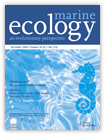The Activity Rhythm of Blennius sanguinolentus Pallas*
an Adaptation to its Food Source?
*Taxonomy of the blennies and the correct generic name of the species “sanguinolentus” is not yet clear (Norman, 1943; Bath, 1977; Zander, 1978).
Abstract
Abstract. In the field, feeding activity of the algivorous Blennius sanguinolentus increased remarkably from morning to late afternoon. Swimming is evenly distributed; other behaviour does not fall into regular daily patterns. No association was found, save in extreme values, between the distribution of any activity and environmental factors measured simultaneously. We suggest that the feeding cycle is an adaptation to the metabolic properties of green algae, the staple diet of B. sanguinolentus. Activity distributions following predictable short-term fluctuations in food quality are expected to be found in other animals.




